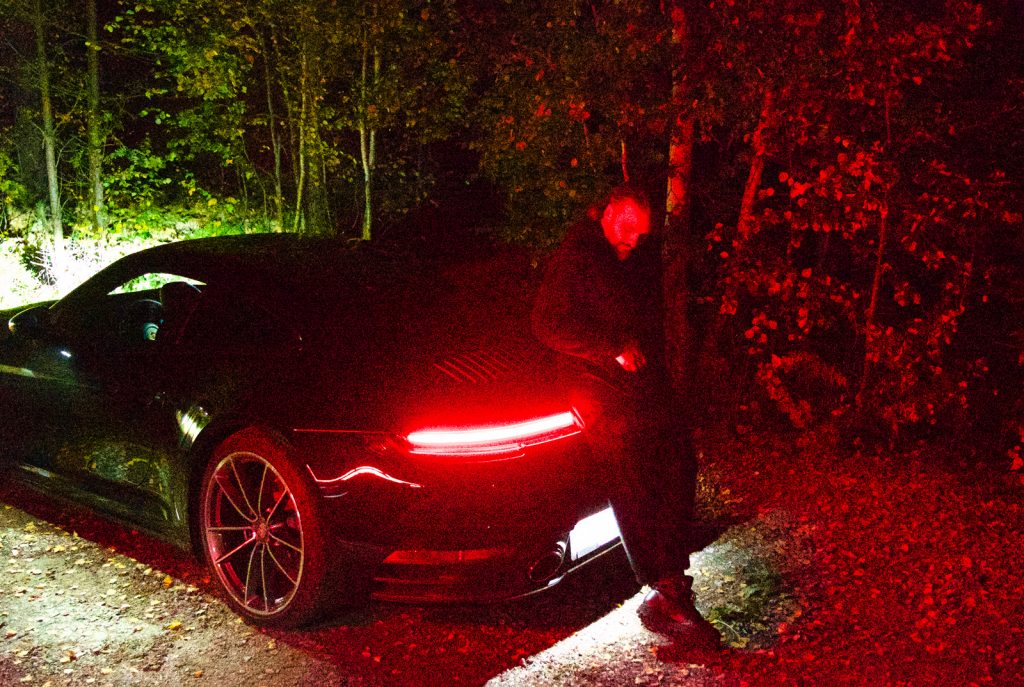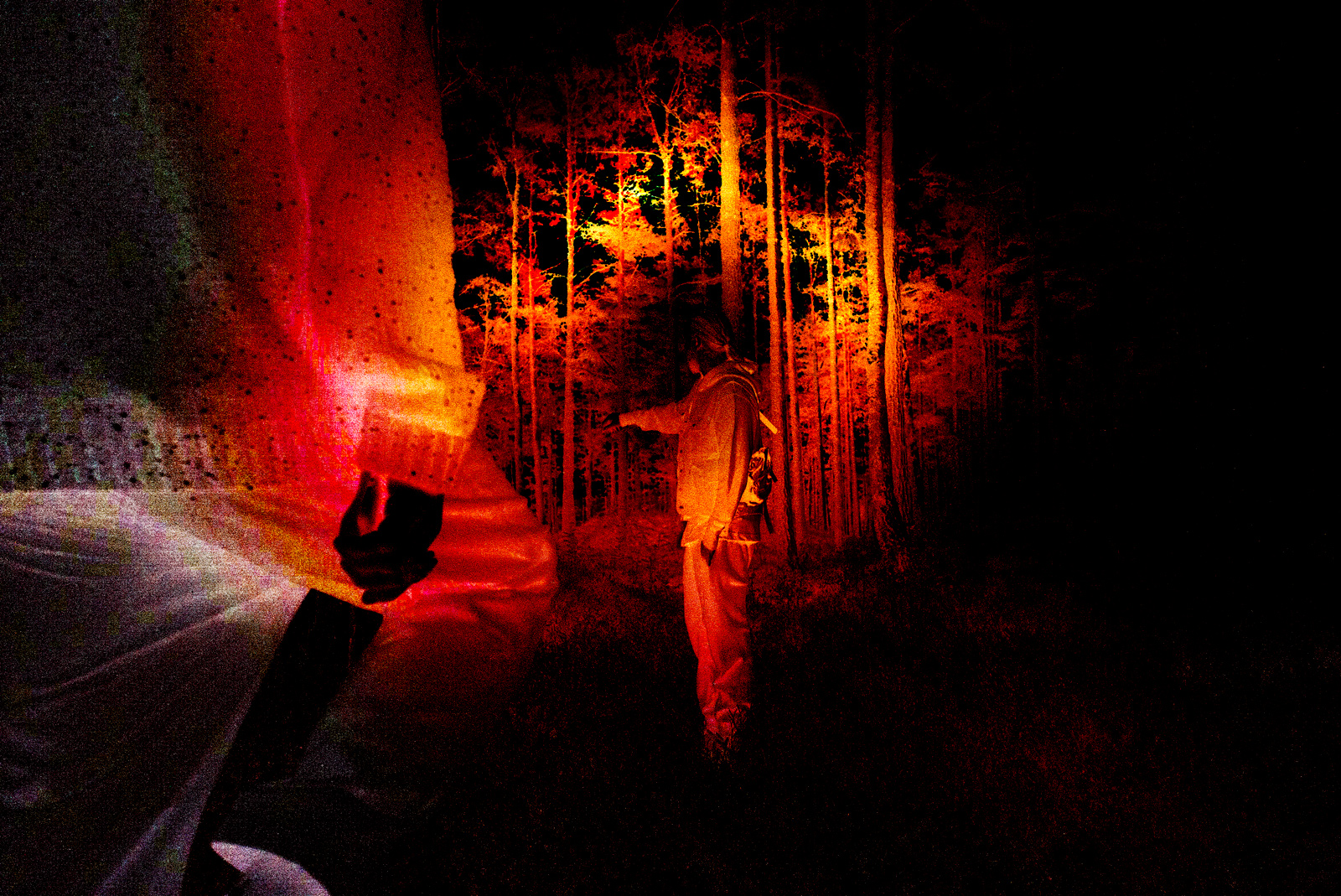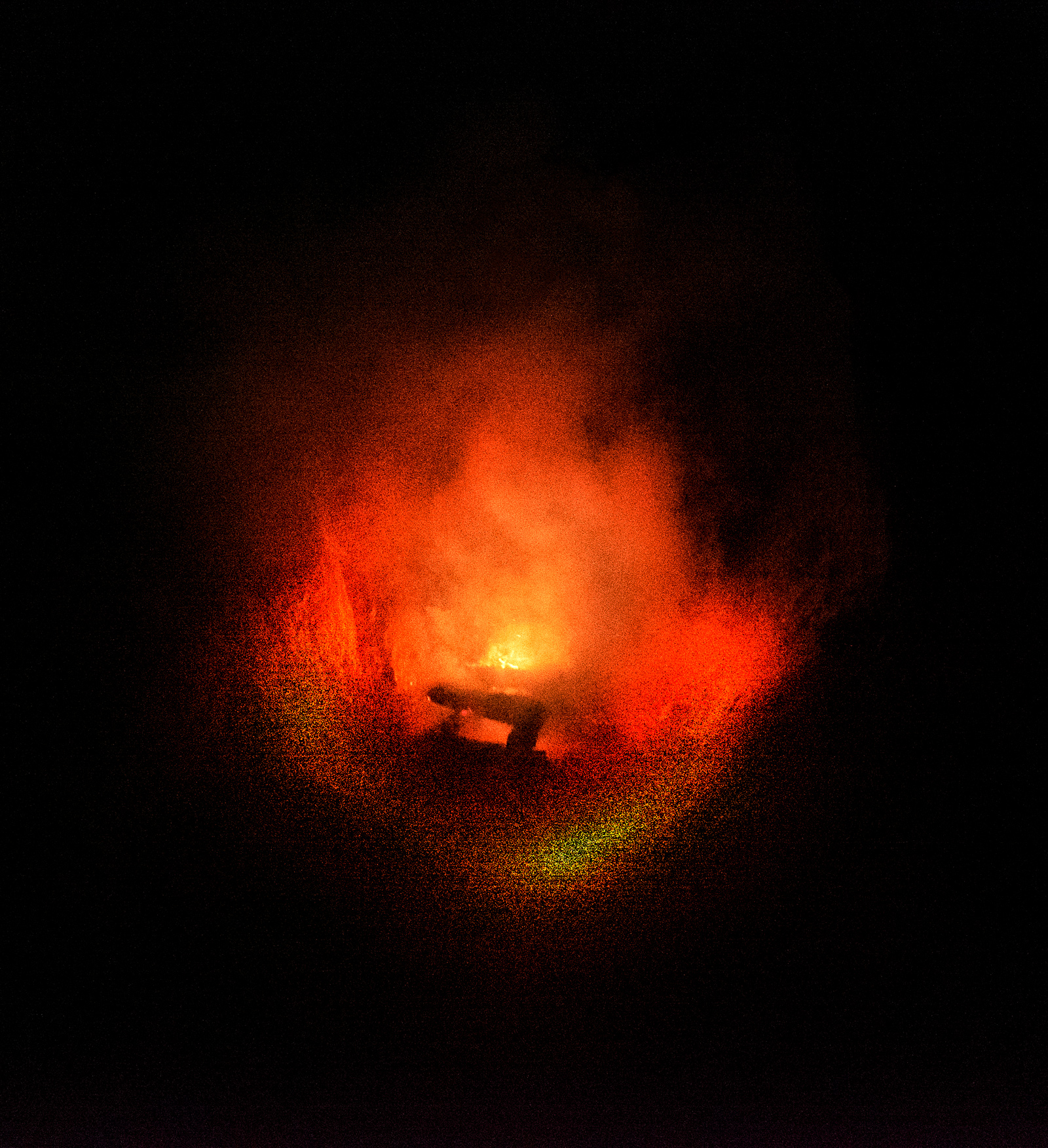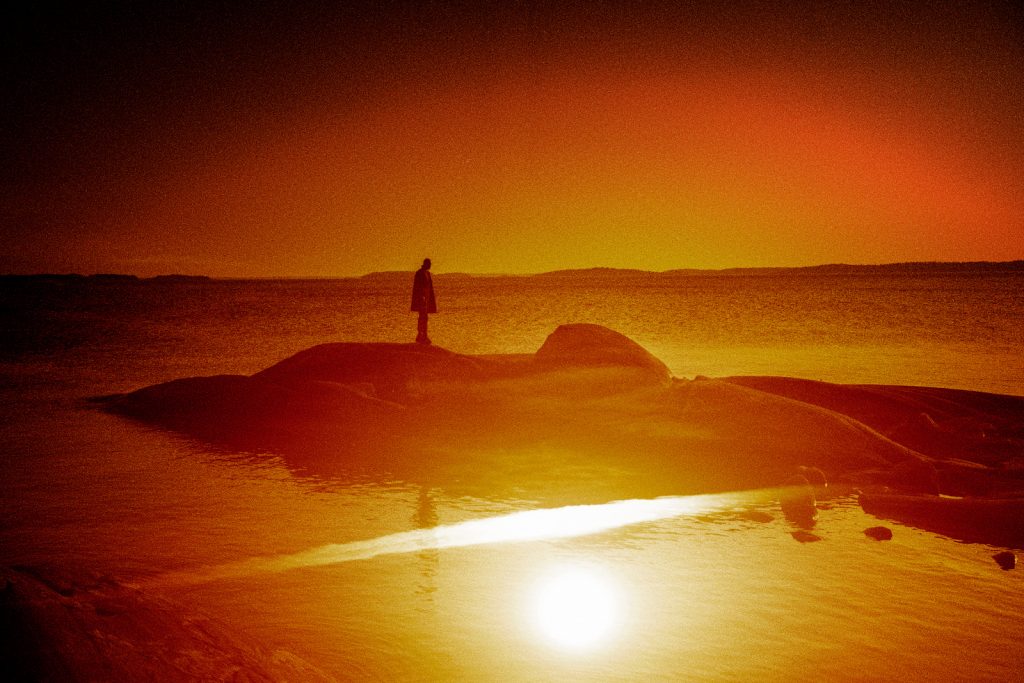on a journey towards the calming chaos of nature
It’s Sunday. We’re on our way to Steve Angello’s hideaway in the Stockholm archipelago. Before nature fully erases any sign of civilization along the road, we make sure to stop to get fire logs. By mere coincidence, he’s had the same idea. We spot him coming out from the store with bags brimming with food; He’s known for being a good cook. He and Alexander embrace each other before getting into a quick repartee, as only good friends do. Their laughs still bounce and dance in the air around us as we return to our separate cars, Steve taking the lead to show us the way to his house.

While they’re on the road, Steve calls Alexander.
Steve Angello: I’ll show you something. Hang on. In two minutes, look to the left.
Alexander Wessely: OK. Exciting…
Two minutes later, we’re driving by trees so tall we’re not able to see the tops of them.
SA: This is a special place… The right spot for today, actually. Let’s settle in at the house and come back here.
Alexander and Steve have brought no less than four cameras with self-timers. They share an interest in the hidden, distorted parts of our minds. This has been actualized in new ways during the pandemic when isolation forced us to really face ourselves head on, without the distractions of a busy modern life. And now the two of them have come here to explore creativity at Steve’s «wildlife resort.»
SA: The complete chaos of nature is what makes us so calm. It grows, it moves, it builds and destroys. The natural evolution is stronger than us. It has and will outlive us. Nature created humans and the energy that surrounds us.
As Alexander is unpacking his kit on the kitchen table, he realizes that someone has taken out the batteries of one of his cameras. Instead of becoming frustrated, he decides that it’s a symbol of the challenge of limited resources during isolation.
The complete chaos of nature is what makes us so calm
AW: The elements of nature are a creative force we can’t explain or control. We’re powerless and oblivious facing its creating and destructive qualities. Nature keeps making and has for millions of years. In that lives a source of deep inspiration. And it’s for everyone to experience.
SA: It’s indeed a force, and we’re extremely dependent on its energy.
Standing side-by-side on the terrace towering almost 30 metes above the meadow, the two men look towards the horizon. Steve leans over the railing and turns his face entirely to meet the sun.
AW: One of our most profound experiences together must be when we were in the black deserts of Iceland during a storm period. The two of us in the middle of nowhere, black ash as long as the eye could see. I have never felt so small. It was a scary and beautiful feeling at the same time. It’s a memory I cherish but still can’t seem to totally relive in my mind.


SA: Nature is usually the answer for us, regardless of the task we’re about to face. It could be building shows, creating products, brainstorming ideas, or when we need extra strength to move forward. We just pick a destination that resonates with what we want to achieve. We’ve ended up by the volcanoes in Iceland, deep in Norway’s forests, in the Swedish archipelagos or the deserts of California.
AW: It’s a great place to find creative energy. I’ve reflected a lot on what happens to creativity in lockdown or isolation this year.
SA: Isolation for me is destruction. I tend to create a personal lockdown for myself when I need to finish an album. It can mean locking myself in for months at a time. I break myself down in order to build myself up again. It’s all part of a “self-destruction” code, where I feel able to convey the most powerful and meaningful messages through my music. When I made my last studio album, I went into a phase of complete destruction for 6 or 7 months and what I found coming out of that changed my life. I realized who I was, what I felt, what to invest my time in, and what the people in my life meant to me. The difference now, with the pandemic, is that people haven’t chosen to isolate themselves. They have been forced to do it, and that’s more difficult to deal with.
AW: I’m very similar to you in that respect. I have been doing “creative lockdowns” for years. I have a hard time focusing when there’s too much noise around me. The silence of nature and working through the nights without meeting too many people works well for me.
We’ve ended up by the volcanoes in Iceland, deep in Norway’s forests, in the Swedish archipelagos or the deserts of California.
Two electric dirt bikes are charging on the patio. Steve invites us to try, and Alexander is quick to accept with a cheeky smile. Suddenly his foot is on the pedal, and off he goes, the bike roaring as he disappears.
SA: Be careful! The steering is very sensitive.
It’s an hour later. We’re deep into the forest with the tall trees, the bit that was pointed out to us by Steve as we drove here. The two men are framing the camera’s eye, reflecting on the shapes of the old forest we’re now surrounded by. Both selfies and photos of each other are taken while elaborating further about their relationship to nature.


AW: The way nature makes you see the imperfect and chaotic as beautiful is staggering… It’s something I have spent years trying to translate into my personal work.
Steve lays down on the moss. It’s covering the ground around a 400-year-old tree shooting up right beside us, towards the sky.
SA: Nature is our primary source of inspiration. That doesn’t necessarily mean we implement it in our work, but we always look to nature to get inspired.
Alexander is busy picking and eating blueberries from the small green blue-sprinkled bushes spread around the area.
AW: The comfort of nature is something you won’t find anywhere else. It’s almost like you forget about everyone and everything once you get here…
Back in the sky-high house, Steve is in charge of dinner. He’s preparing the grill and mixing together a greek salad.
I tend to create a personal lockdown for myself when I need to finish an album.
SA: Research shows that people have spent a lot more time in front of screens this year, due to the lockdowns. I have mixed feelings about that; I think the internet can be extremely destructive, but I also find it very important. Personally, I try to spend as little time as possible in front of the computer when I’m not making music or doing other creative work. I’m still” old-school” and love physical interactions… touching materials, looking at someone’s reaction or facial expression, and being able to tell how someone feels. I do prefer the physical to the digital.
AW: Exactly. I understand why people get sucked into the digital sphere but don’t personally like it. I love the accessibility to information you get from being online, but it can also choke inspiration and taint creative processes with too many references.

After dinner, we’re debating whether to make a fire by the house or in the forest. It’s darker now, but we all want to get back into the wilderness and decide on a night hike to a nearby lake. We start walking in the sunset. The golden light caresses every inch of the forest—one last kiss goodnight before every tree and bush will be blanketed by darkness.
SA: Are you sure this is the right way?
AW: Yes, according to the map, we should be there in 20 minutes.
20 minutes later. The sun has now set, and our only source of light is Steve’s headlamp as we’re trying to find our way to the lake. The forest manifests as strange shapes and shadows.
SA: It’s so good to walk in the forest at night. Always an adventurous feeling.
AW: Darkness really has a way of tickling the imagination. It amplifies things, makes you think of the surreal, mystified, the scary, and twisted.
One hour into our hike, we finally reach the cliffs by the lake and start building a fire.


SA: I was just thinking about us as friends. I’m happy how our relationship evolved during this spring. We’ve been talking and spending time together almost every day. We were lucky not to be forced into isolation like most of the people in the world.
AW: Me too. We speak more now than we did before. The themes of our talks have also developed. We’ve had long conversations about really important things, which again have given way to new kinds of discussions. Like how to reach personal goals that we perhaps never even knew we had, but now had time to reflect on.
The fire is glowing eagerly in the darkness, casting rays of red light all around us.
SA: I wish I could sit everyone down, tell them about my experiences, and explain how much nature has helped me my whole life. As a young kid, I didn’t realize the importance of nature. But the older I got and the more I discovered of the world, I was quick to surrender to nat
ure. With time I’ve sought nature to find answers for all the of the questions I have. I see it as a vital part of a wonderful, meaningful life. We’re lucky to have nature all around us, and we should care for it like we care for our parents.
the older I got and the more I discovered of the world, I was quick to surrender to nature
As the fire burns out, the last glittering coal slowly loses its light. The temperature drops, and it’s time to head home. Somehow, the way back seems shorter. Soon the forest opens, and we’re stepping out on a dark road.
SA: This is not where we left the cars
AW:…
SA: It must be this way…
AW: We’re two kilometers away!
SA: How did we end up here?!
AW: Looks like the forest decided to take us for a spin…
| Photography | Alexander Wessely & Steve Angello |
| Words | Cornelia Hallberg |
| Editor | Caroline Krager |
